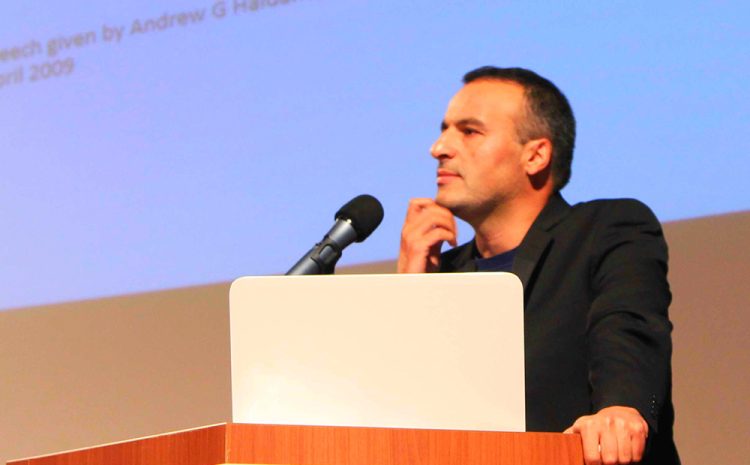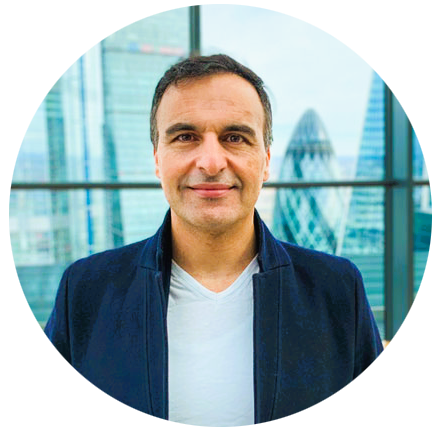
The Conceptual Bridge: From Systemic Risk to Systemic Investing in the Pursuit of Resilience
By Farhad Reyazat – PhD in Risk Management
Citation: Reyazat, F. (2025, August 20). The conceptual bridge: from systemic risk to systemic investing in the pursuit of resilience. https://www.reyazat.com/2025/08/20/the-conceptual-bridge-from-systemic-risk-to-systemic-investing-in-the-pursuit-of-resilience/
Introduction: From Systemic Risk to Systemic Investing
In my research: A Study of Systemic Risk in Global Financial Architecture (University of Southampton and the Cambridge Centre for Economics and Public Policy at Cambridge University, 2015), I demonstrated that systemic risk is not merely the sum of isolated institutional vulnerabilities, but the product of deep interconnections and hidden feedback loops across the global financial system. Just as the global financial system in 2008 collapsed under the weight of hidden correlations and short-term arbitrage, our current socio-ecological systems face a similar fate if left unaddressed. Climate change and inequality today function like subprime mortgages and opaque derivatives then: risks that seem isolated in the short term but are deeply correlated and capable of cascading across borders and sectors. The same dynamics of short-term optimization, opacity, and feedback amplification now threaten not only markets but also the very foundations of ecological stability and social cohesion. Today, we face a parallel situation. Climate change, inequality, and geopolitical instability present complex, evolving risks that cannot be solved with linear, project-based interventions. Just as financial fragility emerges when capital is poorly structured, social fragility persists when capital for change is fragmented, short-term, and symptom-focused.
This is where systemic investing comes in: a deliberate reorientation of capital—financial, social, cultural, and symbolic—toward rewiring system dynamics for resilience, regeneration, and shared prosperity.
The Conceptual Bridge
- Systemic Risk: how financial capital creates fragility when poorly structured.
- Systemic Investing: How financial, social, and cultural capital create resilience when deliberately structured.
This bridge is crucial. Systemic risk analysis revealed how hidden correlations, short-termism, and feedback loops can collapse entire systems. Systemic investing applies the same systemic logic in reverse: designing capital architectures that anticipate complexity, align diverse actors, and create virtuous cycles rather than vicious ones.
Tackling Root Causes, Not Just Symptoms
Most interventions still focus on symptoms—patching one problem, while inadvertently creating new ones elsewhere. In finance, regulators once addressed risks at the bank level, ignoring how shadow banking, securitization, and leverage interwove to amplify systemic shocks. Similarly, in the social sphere, philanthropic or development projects often achieve local gains but leave the root architecture of fragility untouched.
Systemic investing insists on digging deeper:
- Mapping interdependencies and feedback loops.
- Targeting leverage points where small interventions can shift entire system behaviors.
- Designing adaptive strategies that evolve with complex, “cloud-like” problems rather than rigid “clock-like” solutions.
From Fragility to Resilience: Rethinking the Role of Capital
In global finance, capital has too often transmitted fragility. Systemic investing reframes capital as connective tissue, linking governments, businesses, and communities into a coherent system of change. This requires:
- Beyond single projects: investing in ecosystems, not silos.
- Multicapital deployment: leveraging financial, social, reputational, and cultural resources together.
- Collaborative orchestration: acting less as owners of change, more as stewards and conveners.
- Long-term horizons: seeking transformation, not just exit strategies.
The Pathway to Systemic Investing: From Risk Diagnostics to Capital Re-Architecture
Systemic investing is best understood not as a discrete decision but as a structured pathway that parallels the study of systemic risk in financial systems. In financial risk analysis, fragility emerges from hidden linkages, concentrated exposures, and feedback loops (Reyazat, 2015). Similarly, investing that ignores interdependence often deepens systemic vulnerabilities rather than resolving them. (Stanford Social Innovation Review [SSIR], 2021). By contrast, systemic investing deliberately sequences purpose, diagnosis, and multicapital deployment in ways that strengthen resilience at scale.
The following five stages offer a conceptual framework for this journey.
1. Anchoring Purpose and Values of systemic investing
As systemic risk literature demonstrates, financial institutions that pursued short-term arbitrage without a long-term purpose exacerbated instability (Reyazat, 2015). Analogously, systemic investing requires clarity of purpose as the “North Star.” Without explicit anchoring in social or ecological outcomes, capital tends to fragment into isolated, project-based interventions.
This involves explicit articulation of trade-offs between financial preservation and systemic transformation, and alignment of economic, reputational, and relational resources with long-term systemic needs.
2. Mapping the Ecosystem of Stakeholders
In systemic finance, risk is amplified when regulators, investors, and intermediaries operate in silos. Systemic resilience, conversely, emerges from coordinated governance. The same logic applies to investing for social change: systemic outcomes depend on identifying and mobilising diverse stakeholders (United Nations Development Programme [UNDP], 2020).
Stakeholder mapping typically includes:
- Capital providers (philanthropy, private investors, DFIs).
- Institutional enablers (policy actors, accelerators, field-building networks).
- Implementation agents (NGOs, SMEs, community-based organisations).
- Knowledge actors (universities, think tanks, data and evaluation platforms).
This process reveals duplication and blind spots while enabling investors to act as convenors of coalitions rather than isolated allocators of capital (SSIR, 2021).
3. Diagnosing the Structural Landscape
Financial systemic risk models stress the need to analyse interdependencies—such as correlations, liquidity channels, and macro-drivers—before shocks materialise. Similarly, systemic investors must diagnose the underlying system dynamics before deploying capital (Reyazat, 2015; TransCap Initiative, 2020).
The diagnostic phase seeks to identify:
- Structural bottlenecks where resources stall.
- Interventions already active and their limitations.
- Areas of fragility are prone to unintended consequences.
Evidence from Rockefeller’s Shifting Systems Initiative highlights that many interventions risk “treating symptoms” rather than addressing underlying structures of exclusion or unsustainability.
4. Identifying Catalytic Leverage Points
Complex systems exhibit non-linearities: small interventions, when placed strategically, can unlock cascading change. In finance, liquidity spirals illustrate how local shocks scale globally. In systemic investing, targeted catalytic investments can accelerate regenerative cycles (Meadows, 1999; SSIR, 2020).
Examples include:
- Regenerative agriculture that reconfigures entire food systems. For instance, the Mirova Natural Capital Fund in Latin America has demonstrated how investments in regenerative agriculture can deliver measurable carbon sequestration while stabilising rural economies
- Local financial institutions that multiply trust and credit circulation.
- Renewable energy infrastructure that reshapes long-term economic pathways.
Locating such “high-leverage areas” ensures that systemic investing magnifies its transformative capacity, rather than dispersing resources thinly across fragmented projects.
5. Orchestrating Multicapital Strategies
The final stage involves orchestration. Systemic change cannot rely solely on financial capital; it requires coordinated deployment of multiple forms of capital—social, reputational, cultural, and symbolic (TransCap Initiative, 2020).
A practical vehicle in financial capital could be the multi-layered fund architecture, which mirrors portfolio diversification in finance but with systemic outcomes as its objective:
- Resilience Layer: stable, liquid assets to buffer volatility and provide adaptive liquidity.
- Growth Layer: illiquid assets and private ventures generating reinvestable returns.
- Systemic Impact Layer: thematic allocations (e.g., regenerative hubs, community banks, mission-driven venture studios).
- Redistribution Mechanism: extraordinary returns cycled back into the ecosystem to avoid value extraction.
Beyond layered funds, systemic investors may employ blended public–private finance, catalytic guarantees, or partnerships with development finance institutions (DFIs). Governance mechanisms remain central to ensure accountability, trust, and adaptive learning—principles emphasised in trust-based philanthropy models. Recent innovations such as the EU Green Bond Standard, or the African Development Bank’s blended finance facilities, show how different layers of capital — policy guarantees, public capital, and private investment — can be orchestrated into resilient financial ecosystems.
From Fragility to Renewal
This framework mirrors the trajectory of systemic risk research. The same system dynamics that once amplified fragility can be reoriented to cultivate renewal. Provided they are anchored in purpose, orchestrated across capitals, and directed toward systemic leverage points, ecosystems are illuminated, leverage points are targeted, and diverse capitals are orchestrated in concert.
Systemic investing thus represents a paradigmatic shift: redeploying finance from amplifying vulnerabilities toward cultivating long-term renewal across social, economic, and ecological domains. In doing so, it integrates the diagnostic tools of systemic risk research with the transformative ambitions of impact investing and philanthropy.
Toward Systemic Change: Linking Risk and Investment
From a risk perspective:
- Fragility arises when too many actors chase short-term gain, correlations cluster hidden risks, and feedback loops amplify shocks.
From an investing perspective:
- Resilience is built when diverse capitals are aligned, positive feedback loops are created (community reinvestment, regenerative ecosystems), and long-term governance structures replace opportunistic short-termism.
Systemic risk analysis showed us why systems fail; systemic investing offers a blueprint for renewal. Finance must now evolve from extractive allocation to systemic stewardship.
Conclusion: From Systemic Risk Diagnostics to Systemic Renewal
The evolution from systemic risk to systemic investing represents more than a methodological pivot; it embodies a normative redefinition of finance itself. Systemic risk research illuminated how fragility emerges when actors are fragmented, when incentives prioritize short-term gains, and when hidden interconnections transform localized failures into global crises (Reyazat, 2015). Systemic investing extends this analytical lens by proposing that the very forces which once amplified instability—capital flows, institutional linkages, and feedback loops—can be repurposed as engines of resilience and regeneration (Meadows, 1999; SSIR, 2023).
What emerges is a paradigm shift: finance as stewardship rather than extraction, as ecosystem architecture rather than isolated allocation. The transition requires investors, philanthropists, and policymakers to embrace multicapital strategies, illuminate systemic interdependencies, and design interventions that unlock leverage points capable of catalyzing transformation across social, economic, and ecological domains (TransCap Initiative, 2020; UNDP, 2020). Such a vision challenges conventional investment logic, which too often conceives of risk and return in narrow financial terms, divorced from the systemic contexts that ultimately determine durability.
Crucially, systemic investing is not a rejection of complexity but a disciplined engagement with it. Just as risk models cannot eliminate uncertainty but can equip institutions to navigate it, systemic investing does not seek to simplify systemic problems into linear “projects.” Instead, it acknowledges their adaptive, networked nature and seeks to structure capital flows in ways that reinforce resilience rather than fragility (RPA, 2013).
The imperative before us is therefore clear. As climate change, inequality, and geopolitical volatility intensify, incremental and siloed approaches will fail to keep pace with cascading global risks. By anchoring purpose, mapping ecosystems, diagnosing structural fragilities, and orchestrating multicapital strategies, systemic investing offers a coherent blueprint for shifting from crisis management to long-term renewal. In this sense, systemic risk and systemic investing should be understood as complementary: the former warns of the architecture of collapse, while the latter provides a framework for the architecture of regeneration.
Ultimately, the journey toward systemic investing is not only a technical innovation but a moral and institutional responsibility. It asks of capital not just to fund projects, but to reweave the connective tissue of societies and ecosystems in ways that sustain resilience, justice, and shared prosperity for future generations.
References
- Meadows, D. (1999). Leverage points: Places to intervene in a system. The Sustainability Institute.
- Reyazat, F. (2015). Systemic risk: A new approach to financial stability (Research Study, University of Southampton). University of Southampton Institutional Repository. https://eprints.soton.ac.uk/398053/
- Rockefeller Philanthropy Advisors. (2013). Gather: The art and science of effective convening. Rockefeller Philanthropy Advisors.
- Stanford Social Innovation Review. (2023). Systemic investing for social change. Stanford Social Innovation Review. https://ssir.org/articles/entry/systemic_investing_for_social_change
- TransCap Initiative. (2020). Transformation Capital — Systemic Investing for Sustainability, TransCap Initiative. Transformation Capital — Systemic Investing for Sustainability | by Dominic Hofstetter | TransCap Initiative | Medium
- United Nations Development Programme. (2020). Funding windows and portfolio approaches for systemic change. UNDP. Funding Windows – 2020 Annual Report.pdf
- Pana, T. N. (2021). Context & challenges of the 2021 EU Green Bond Standard (SSRN Scholarly Paper No. 3920262). Social Science Research Network. https://doi.org/10.2139/ssrn.3920262
- Reuters. (2024, June 6). Mirova and Rainforest Alliance to scale up land-focused projects. Reuters. Retrieved from https://www.reuters.com/sustainability/land-use-biodiversity/mirova-rainforest-alliance-scale-up-land-focused-projects-2024-06-06/






4 replies on “The Conceptual Bridge: From Systemic Risk to Systemic Investing in the Pursuit of Resilience”
The Real Person!
Author Pedi acts as a real person and passed all tests against spambots. Anti-Spam by CleanTalk.
What we need is system change
The Real Person!
Author Adrian acts as a real person and passed all tests against spambots. Anti-Spam by CleanTalk.
It is not a real conceptual bridge more practical one
The Real Person!
Author Rosana acts as a real person and passed all tests against spambots. Anti-Spam by CleanTalk.
WONDERFUL Post.thanks for share..more wait .. …
The Real Person!
Author Alexandra acts as a real person and passed all tests against spambots. Anti-Spam by CleanTalk.
If some one wants expert view on the topic of blogging
after that i suggest him/her to go to see this website, Keep up the fantastic job Dr Reyazat